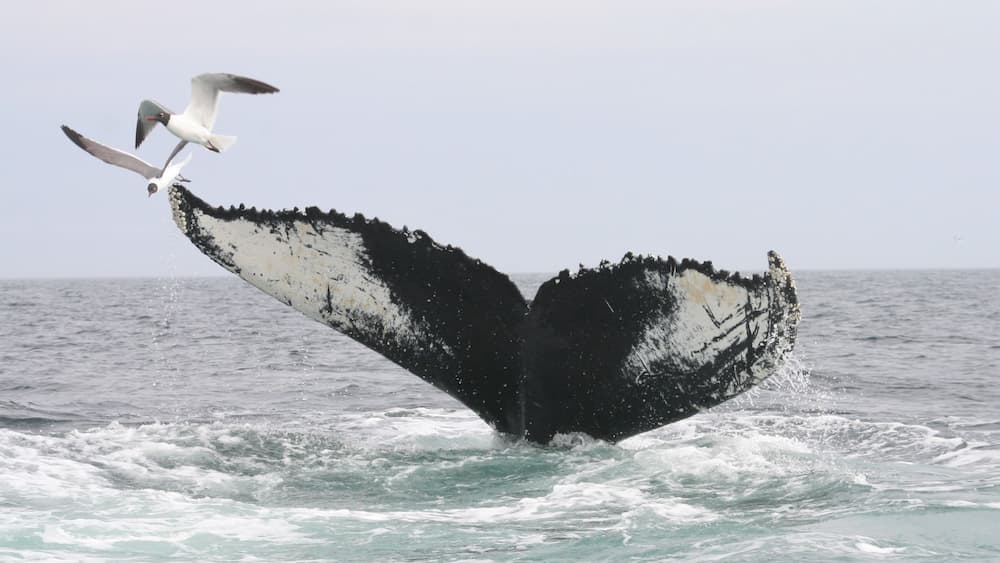
Whale watch naturalists identify humpback whales primarily by the patterns on the undersides of their tails. The flukes (the two lobes of the tail) can range from all white (rated a 1) to all black (rated a 5) with many permutations between the two extremes. Patterns develop from natural pigmentation, scarring from attacks by predators (usually in youth), other wildlife encountered in the environment (such as barnacle attachments), and scarring from interactions with humans (usually entanglement in fishing gear and collisions with ships). Scars show as white marks on dark flukes and as dark lines on white skin.
Whale naturalists and scientists have found that it is easier to identify and study whales if they have simple names rather than a catalog number. So, each year newly observed whales are given names, although calves are usually not named since their fluke patterns may change significantly in the first few years. The whale experts pick names that refer to the shape of a mark or a set of scars.
The Center for Coastal Studies catalogs all of the Gulf of Maine whales, which includes Stellwagen Bank National Marine Sanctuary individuals. It is believed that sanctuary waters may be a favored area for mother whales who are weaning their young and teaching them how to hunt prey. The College of the Atlantic curates the larger North Atlantic Humpback Whale Catalog.
Here are six whales -- they are named Chromosome, Echo, Lavalier, Nile, Pele, and Wyoming. Can you identify each whale and figure out how it got its name? Answers are behind the photos.
A large scar on the left fluke resembles an X chromosome.
Rake marks (probably from an Orca attack early in life) on the left fluke look like a sound symbol.
A black mark on the white of the right fluke resembles a hanging pendant or lavalier microphone.
The twisting scar on the outer edge of the left fluke looks like a river and tributary.
A round dot on the left fluke brings to mind a soccer ball in flight (Pele was a star soccer player from Brazil.)
The right fluke shows a dark ”W” mark in the outer white section.